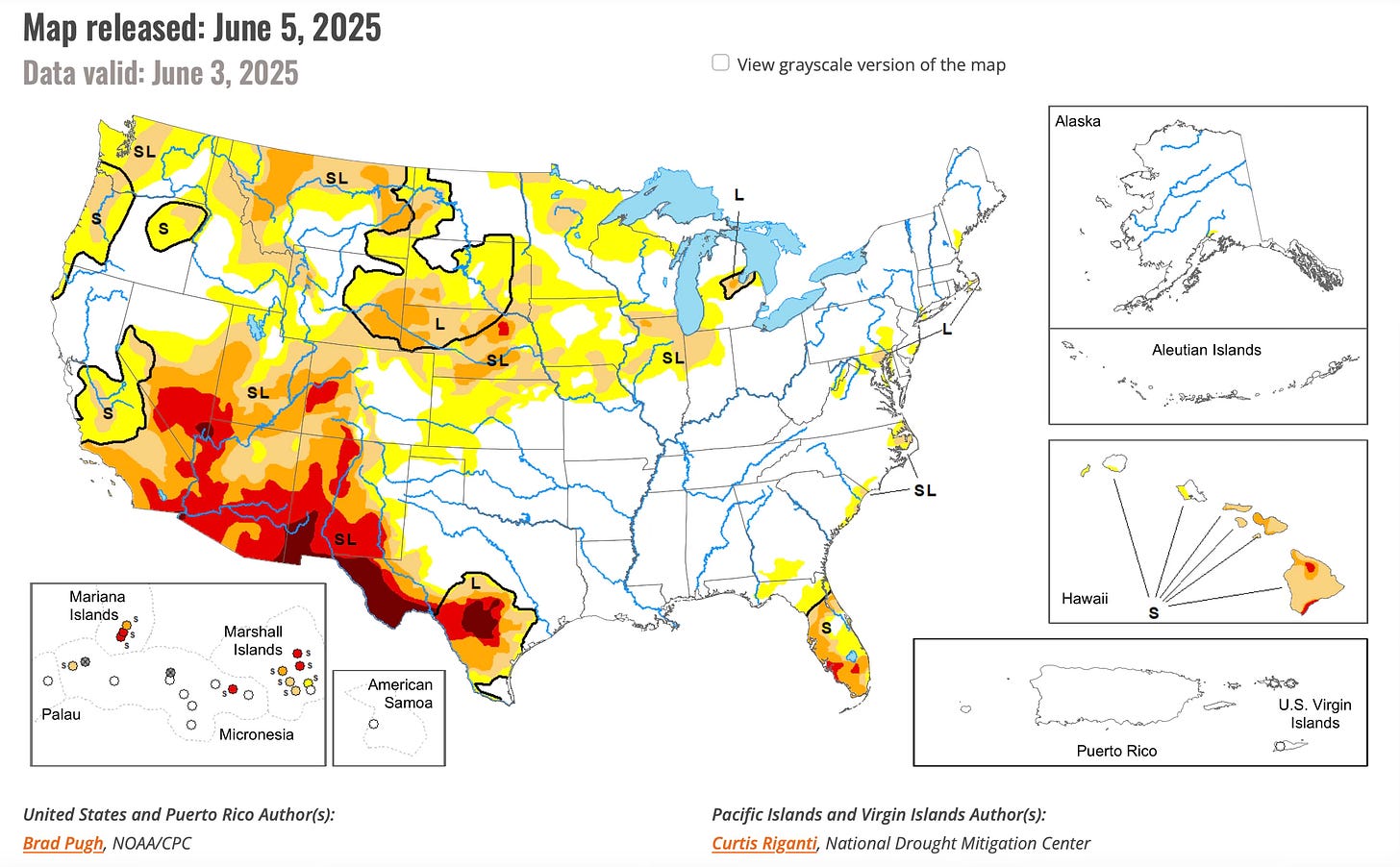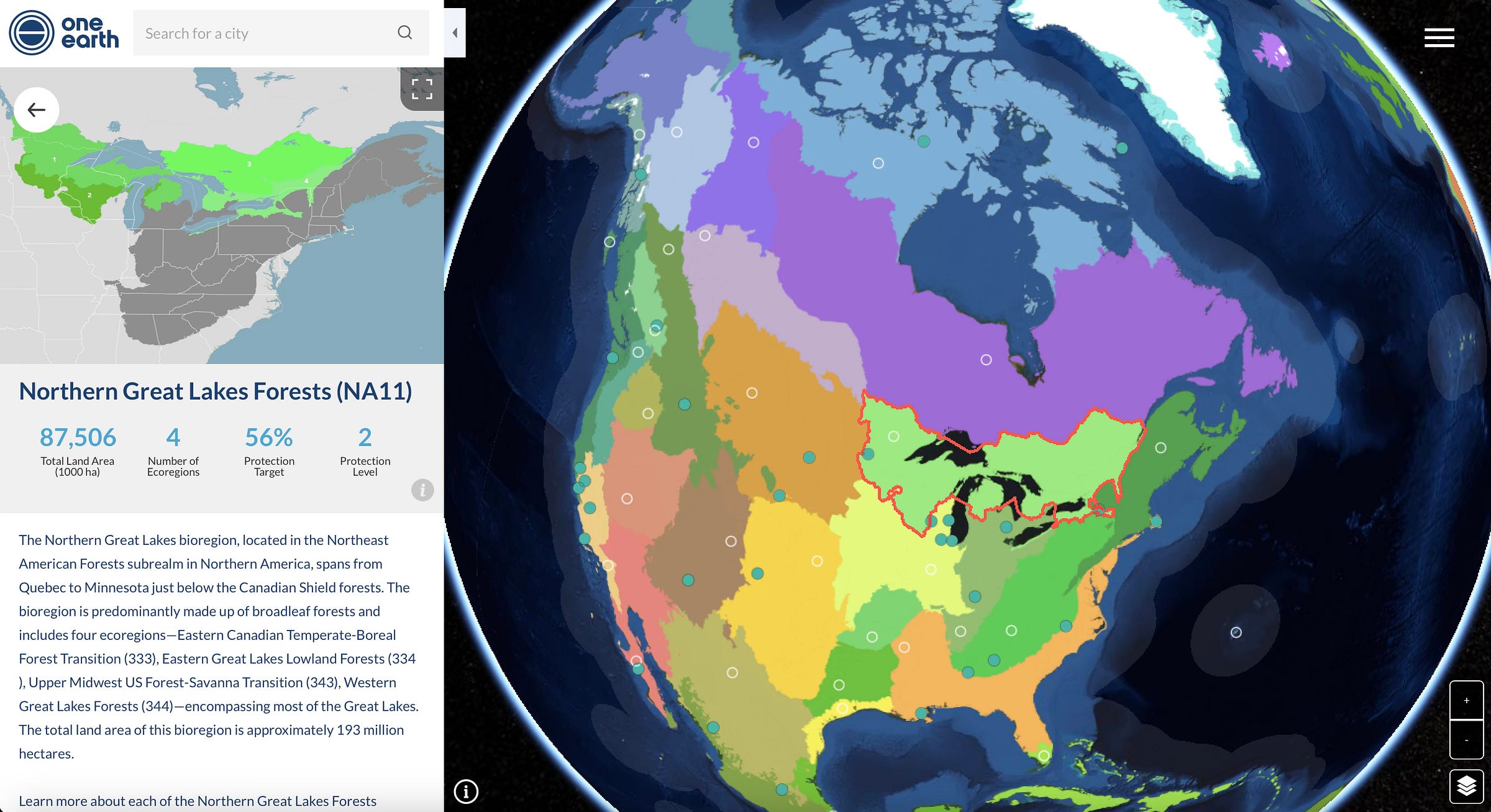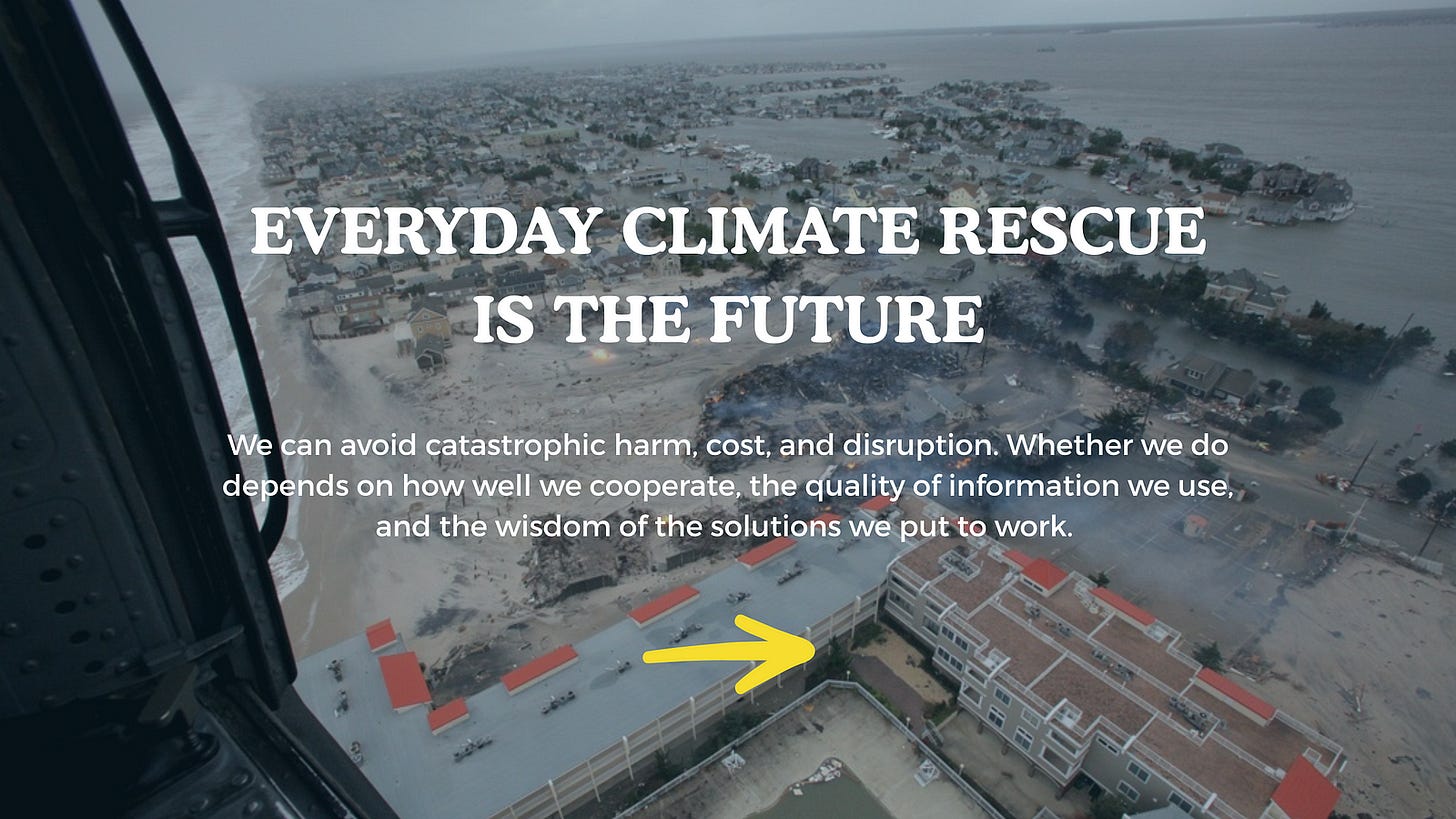ACCESS to GOOD: The recipe for enduring prosperity
To achieve enduring prosperity, we need to address climate risk, reduce impacts, and build resilience, in ways that heal economic disparities.
Two months after 196 nations gathered in Paris to negotiate the most important implementation agreement for global climate action, the Paris Agreement, Geoversiv released a short brief titled ACCESS to GOOD, through the Engage4Climate Network, in collaboration with partners in the Pathway to Paris stakeholder engagement process. It was a hopeful combination of two broad-spectrum theories of change:
ACCESS: Aspirational Collaboration on Climate, Energy, Sustenance, and Security-shorthand for the kind of global agreement and action agenda the Paris conference was tasked with creating;
GOOD: Generative Organic Optimization Demand-the everyday demand for economics that generate new additional value, while eliminating preventable and unpaid harm; in other words: good economics.
GOOD-based economics focuses on activities that generate new additional value from the combined force of value-adding interacting improvements, which enhance and compound each other’s effects. This requires not only clear strategic non-financial goals and innovative business models, as well as policies and incentives; it also requires reinforcements of the new additional value, to consolidate external returns on investment (XROI), or what are known as compounding co-benefits.
The Demand Challenge
The word ‘demand’, behind the D in GOOD, has been somewhat controversial. Some have argued that demand-based economics will be full of inefficiencies, with money chasing trends and the illusory hard-to-sustain consumer demand set up by marketing campaigns. Others raise the alarm that demand is generating planetary crisis, as consumption spirals to ever-greater overuse of finite resources, to the detriment of health, wellbeing, and Nature. Two important responses to those arguments have stood up over time:
Supply-side economics prioritizes apparent efficiencies in wealth creation by chasing trends and the illusory demand set up by marketing campaigns, without regard to real-world value creation; the result has been a destructive accumulation of absurd levels of wealth at the very top of the income ladder, while most people and ecosystems carry added costs and face decreased immediate or long-term security.
It isn’t about consumer demand alone; it is about responding to the background natural need for optimized value creation that generates not only a financial return but a stronger foundation for future value creation, in people’s lives, at the human scale, and with constructive benefits to planetary systems that sustain life and make all other value possible.
The goal is to center the integral and holistic needs of all people, communities, industries, and nations, for everyday modes of exchange and value creation that support improved human security and experience, and the sustainable health and resilience of planetary systems.
Generating Real-world value
It is important to highlight, at this moment in the rapid evolution of technology and business, that the word “generative” in GOOD-based economics has nothing to do with so-called “generative artificial intelligence”. Here, generative means: working in a way that produces value-building direct, secondary, and multidimensional effects. Such beneficial effects are reinforcements, in that they consolidate and support building on the GOOD-responsive basis for improved wellbeing.
Looking at human-scale economic activity through the GOOD economics lens, specific kinds of generative reinforcements can be observed, measured, and tracked for their clear value added. This makes it possible to see where economic systems are weak and lack resilience or where they have resilience and are prepared to work through adversity. Because reinforcement of generative dynamics is in everyone’s interest, there is an untapped market opportunity for supporting reinforcements.
Biospheric: Life-sustaining compounds without which human life is not possible: clean air, clean water, and food-borne nutrients. We have replaced the word ‘biological’ with ‘biospheric’ to name this category, to highlight the importance of not only sustaining life in microcosm, but the broader natural conditions that shape the living space of planet Earth.
Biospheric GOOD reinforcements can be measured in terms of the health and resilience, consistency, and adaptive capacity, of natural systems.
One example is the farm-adjacent ecosystems that pollinators depend on that allow them to thrive and work in such numbers to support agriculture at levels sufficient to achieve affordable, healthy food for all.
Another is the chemical composition of the atmosphere, which determines how much heat moves through the climate system, and what conditions are then possible.

Structural: Next are those structural comforts of the built environment, without which human beings are less able to achieve long life expectancy and educational and professional excellence.
Some examples would be shelter, plumbing and heat, and electricity-all of which must be not only available, but also affordable and aligned with both human and planetary health and wellbeing.
Others would be the transportation and logistics infrastructure that allows value chains to come together, respond to evolving needs, and become more efficient at delivering value.
Whether such infrastructure is sustainable, both in its operational capacity and in its impact on Nature, is another element of the overall GOOD calculus.
These structural GOOD reinforcements are necessary not because one ideology wins out over another, but because an overall assessment of value shows there is more value available when such aspirations are experienced as everyday reality.
Intellectual: To build on biospheric and structural reinfrocements, governments and institutions, can prioritize intellectual commodities that enrich and improve the human experience and decision-making capabilities. These include information, education, technology sufficient for erasing the digital divide, and in our time, effective means of preventing weaponized automated disinformation.
Social media algorithms and rapidly advancing copy-paste AI systems (“gen AI”) are creating complicated, pervasive, and unprecedented threats to the intellectual and informational reinforcements that make liberated human existence possible.
More user-centric information services might deprioritize some of the new business models pushed by tech giants, but could allow for a more efficient and empowering upgrade to traditional information systems.
The freedom to not only identify and critique systems that invite or propagate disinformation, but to spread corrective information and reliably out-compete bad actors, is an important measure of intellectual GOOD reinforcements and their foundational value for everyday economic health and wellbeing.
Political: The hope, then, would be that with these biospheric, structural, and intellectual reinforcements come political liberties.
There is expanded overall opportunity in a society that recognizes and upholds freedom of thought, freedom of assembly, freedom of worship, freedom of the press, freedom from all forms of discrimination, and an enforceable guarantee of voting rights and the right to pursue legal redress for grievances.
In short: to put the preceding GOOD reinforcements into practice in the world, ordinary people need leverage to hold power accountable and to ensure justice is always possible if not always immediate.
The ability of individuals, communities, and institutions, to act with moral, practical, and political sovereignty is enhanced by value-generating biospheric, structural, and intellectual GOOD reinforcements.
Community: Individuals and families tend to be, as economic actors, expressions of Generative Organic Optimization Demand, specifically over and above the four preceding categories of primordial GOOD economic requirements: biospheric, structural, intellectual, and political.
Individuals and families are best able to participate in the economic, social and political constellation of influences, when there is community infrastructure allowing for substantive, character-driven interaction at the human scale.
This is because they are witnesses-conscious and conscientious actors that bring to their environment their own insights, ethics, cooperative impulses, and the trust-building urge to create better outcomes.
In communities that are healthy, where people are free to make their own choices and also enjoy the protection of fundamental, univeral rights, it is possible for self-interest and shared interest to come together in ways that make it easier to do well by doing good.
These last two-political and community-level GOOD reinforcements-specifically prioritize the rights of individuals over the power of large networks, because unless GOOD co-benefits are reinforced at the human scale, the health-building effect at societal scale cannot be achieved. To achieve best-case sustainable prosperity and security, all nations need to have functioning civic spaces where real-world need and optimal approaches can have a hearing, hold sway, and overcome a flawed status quo.
Cooperative Problem-solving for development & security
From the vantage point of mid-2025, it is worth looking back 9 and a half years to the question of ACCESS to a livable future, through a global cooperative endeavor consciously focused on leveraging GOOD reinforcements. At the time of the Paris Agreement and the Sustainable Development Goals, both of which also built on a global commitmen to improved Financing for Development and cooperative Disaster Risk Reduction, we identified the need to link climate and food systems to economic prosperity and sustainable security.
This led to the ACCESS standard:
Aspirational-aiming for the best possible outcome: reducing climate risk, building resilience, achieving sustainable inclusive human development, on time, for everyone (the SDGs are a good measure of how high our aspirations need to be);
Collaboration-working together at all levels to make this possible, establishing and sustaining intelligent, value-building cooperative approaches between communities, cities, regions, and nations, and across sectors and value chains;
Climate-recognizing that without serious progress toward comprehensive decarbonization and climate-resilient development, all other human aspirations will be more difficult, if not impossible, to achieve, focusing on the 1.5ºC maximum global heating threshold and evidence from the AR6 that we must achieve this by 2040 or lose critical stabilizing structures of the climate system;
Energy-building decarbonized energy economies, including through technology sharing, financial innovation, just transition strategies, cooperative system-level innovation, aligned incentives, and climate-smart trade;
Sustenance-starting with food systems, and extending to the wider landscape of human need, including cultural creation, creative collaboration, and education, that fits the tension of our times (again, the SDGs are a solid reference);
Security-no longer pretending that climate is a niche issue that does not affect the stability of nation states, developing plans to address the rapidly proliferating threats putting dozens of countries into debt distress and risk of geophysical, socio-economic, and fiscal destabilization.
The Paris Agreement is, we believe, structured to support this broad cooperative agenda for shared sustainable prosperity and security. That structure invites new major steps forward that have not yet been agreed, including specific approaches to cooperative decarbonization, like a Fossil Fuel Non-Proliferation Treaty.
Cooperative problem-solving can also work far more broadly, across all areas of human development and economic interest. Article 6.8 of the Paris Agreement calls for “integrated, holistic, and balanced non-market approaches “ to multilateral cooperation to accelerate overall climate crisis response. The Climate Value Exchange is focused on building awareness of and action toward this cooperative effort toward the best-case future for all.
Maximizing Enduring Value-Creation
The Resilience Intel intiative grew out of this ACCESS to GOOD draft framework. At its core, Resilience Intel was centered on the principle that to generate enduring value, finance and investment, whether from the public, private, multilateral, or philanthropic sectors, should support enhanced macrocritical resilience. That just means effects that are healthy and resilient at the macro level-across the wider scope of human activity and our dependence on Nature.
The 17 Sustainable Development Goals -each with around 10 target areas for improved outcomes-are are a good reference for drivers of macrocritical resilience. An example would be the prosperity and security value of equal rights and full educational access for women and girls: Societies that do well on this measure are more secure; those that treat women most cruelly are among the most violent and unstable.
Another example is food systems. The Food System Economics Commission has found that since the Paris Agreement was signed in April 2016, the world has collectively spent or lost more than $140.4 trillion due to unsustainable food systems that undermine watersheds, ecosystem integrity, climate security, and human health and wellbeing.

At the COP29 U.N. Climate Change negotiations in Baku, Azerbaijan, last year, the 196 nations formally committed to preventing dangerous industrial climate disruption, under the global Climate Convention, adopted finance mobilization goals of $300 billion per year from wealthy industrialized countries and $1.3 trillion per year “from all sources”. To get there, important innovations will need to emerge and be adopted widely in the everyday operation of financial institutions both in government and in private enterprise.
To effectively leverage the full spectrum of value-building priorities linked to the ACCESS to GOOD standard, and to avoid the kind of resource destruction tracked through food systems (which is, by the way, far more than the $1.3 trillion in projected climate-related finance “from all sources”), GOOD-aligned money needs to get local and create benefits at the human scale. We cite here several reports that highlight opportunities inherent in right-scaling and gettng local to create additional value:
New tools are being designed to mobilize resources for this more cooperative, human-scale approach to global climate security. One example is the Co-Investment Platform for Food Systems Transformation being developed by the Good Food Finance Network and key partner institutions.
While June 2025 negotiations in Bonn, Germany, will not decide specifics of how such efforts will play out, they should be informed by and leverage the potential of these critical innovations. The Earth Diplomacy Leadership page for a Post-negotiations Debrief will track the process and link to useful dispatches and other resources.
A REMINDER
Climate impacts are the effect of planetary dynamics, but they strike locally, and infiltrate everyday experience. Wildfire smoke can make cherished places, or everyday surroundings, unbreathable; flash floods can strike after only minutes of industrially intensified rainfall over ground left dry from drought and anomalous heat; degraded watersheds undermine the ecological balance and integrity of natural systems that support pollinators and make agriculture possible.
Climate policy and sustainable economics are not abstractions; they are decisions about whether or not our lives will be safe and free, open to our ingenuity and enjoyment. We can decide whether societies have a real chance to coexist peacefully or whether they will suffer and spread damage and destabilization.




